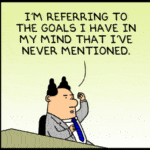
The economic environment in Alberta has taken a toll on a lot of organizations, and unfortunately as a result, many professionals have been laid off. Today fewer companies are hiring and unemployment has increased – which has created a very competitive job market for those opportunities that do exist. Many professionals are faced with the challenge of standing out in the recruitment process, and are wondering why they aren’t getting the response they hoped for – or any response – to their applications.
Wednesday night I had the pleasure of speaking with Global News’ Linda Olsen and Gord Gillies in a “Surviving the Slump” segment, providing tips and suggestions on how professionals can craft their resume and cover letter to stand out. You can check out the interviews and article on Global News, but as a summary, here are a number of suggestions and tips for you to take into consideration as you actively search for the next step in your career:
- Customization and Relevancy is Key – If your cover letter is not drafted specifically for the organization / role you are applying for, many managers/recruiters would argue it is not worth the paper it is written on.
- 1 Page Max Cover Letter – Content should be customized and concise.
- 2 Page Max Resume – Make sure your experience is relevant and results focused.
- Name & Designations – Include education or designations that are required/relevant to the role you are applying for with your name at the top of your resume and cover letter. Doing so will demonstrate immediately whether you have the educational background they are looking for. Ex. Amanda Salopek CHRP, RPR, BComm for an HR Manager role.
- Include an Impact Statement – A sentence at the top of your resume that summarizes who you are and what you can offer the organization/role. Tailor the sentence to the company and qualities they are looking for in a candidate. Ex. Experienced Public Relations professional with strong media relations experience seeking PR Manager position with a leading non-profit organization.
- Explain Your Exit – If you have multiple roles on your resume that demonstrate less than a year with companies, include a brief note explaining the reason your employment ended with the organizations. Ex. (workforce restructure), (relocation), (lay-off due to economic downturn), (resigned to pursue advancement opportunity) etc. Didn’t leave the company on a good note or left due to a bad fit? Do not include this on your resume – but be ready to discuss this in your interview.
- Focus on Results – The information you include in your resume under each role should be results focused, detailing what you achieved in the position and the value you added to the organization. It should not just be a list of your duties and responsibilities while you worked for a company.
Wondering why your resume isn’t getting the response you were hoping for (or any response at all)? Here are a few Resume Red Flags we as recruiters see far too often:
- Lack of Attention to Detail – This could include the wrong company name, position name or a resume/cover letter riddled with spelling errors. Also be sure to follow the application instructions as provided in the job posting.
- Job Jumpers – If your resume demonstrates a trend of repeatedly leaving companies in under a year, any manager is going to wonder why it would be any different with their company. As per above, Explain Your Exit to avoid getting categorized as unable to commit.
- Not a ‘Novel’ Idea – Resumes/cover letters that read like a book come across as cumbersome to recruiters, and often include repetitive or excessive information. Limit your experience to that which is applicable to the position you are applying. If you have held positions that were not obviously relevant, give thought to the responsibilities you had in that role that were relevant to the position. Summarize positions more than 10+ years or three positions ago with the position title, time frame you were in the role and a summary statement of your responsibility and achievements.
- Photo Free – Do not include a photograph on your Resume – unless you are headed to a casting call where headshots are industry norm, your appearance should not be a determining factor in whether you are the right fit.
- Be Transparent – Excluding dates and timeframes from your resume raises questions for recruiters. Be upfront about how recent or relevant your education and experience is.
As a final piece of advice, as a recruiter, I would say that what makes the biggest statement is a cover letter and resume that expresses genuine enthusiasm and understanding of the opportunity, position and company. The biggest tip I can give professionals as they search for the next step in their career is to ensure that your cover letter and resume is customized and relevant to the role/company which you are applying for. Taking the time to craft a cover letter and resume that represents your sincere interest and demonstrates your fit for the position and organization in terms of skills, experience and culture will massively increase the attention (and interviews) you capture as you apply for positions.


 Amanda is a Chartered Professional in Human Resources who holds a Bachelor of Commerce, Marketing degree from the University of Calgary’s Haskayne School of Business. She is an experienced Recruiter and has worked previously within various industries to support full cycle recruiting. Amanda specializes in Targeted Recruiting, working closely with clients and Salopek’s consulting team to execute searches that identify, source and place professionals. Amanda’s Targeted Recruiting support includes successfully recruiting for a diverse range of professionals, from executive leadership roles and senior management, technical services, trades professionals and support roles. Amanda’s HR experience also includes assisting managers with employee relations, exit interviews, policies & procedures and employment standards inquiries.
Amanda is a Chartered Professional in Human Resources who holds a Bachelor of Commerce, Marketing degree from the University of Calgary’s Haskayne School of Business. She is an experienced Recruiter and has worked previously within various industries to support full cycle recruiting. Amanda specializes in Targeted Recruiting, working closely with clients and Salopek’s consulting team to execute searches that identify, source and place professionals. Amanda’s Targeted Recruiting support includes successfully recruiting for a diverse range of professionals, from executive leadership roles and senior management, technical services, trades professionals and support roles. Amanda’s HR experience also includes assisting managers with employee relations, exit interviews, policies & procedures and employment standards inquiries.